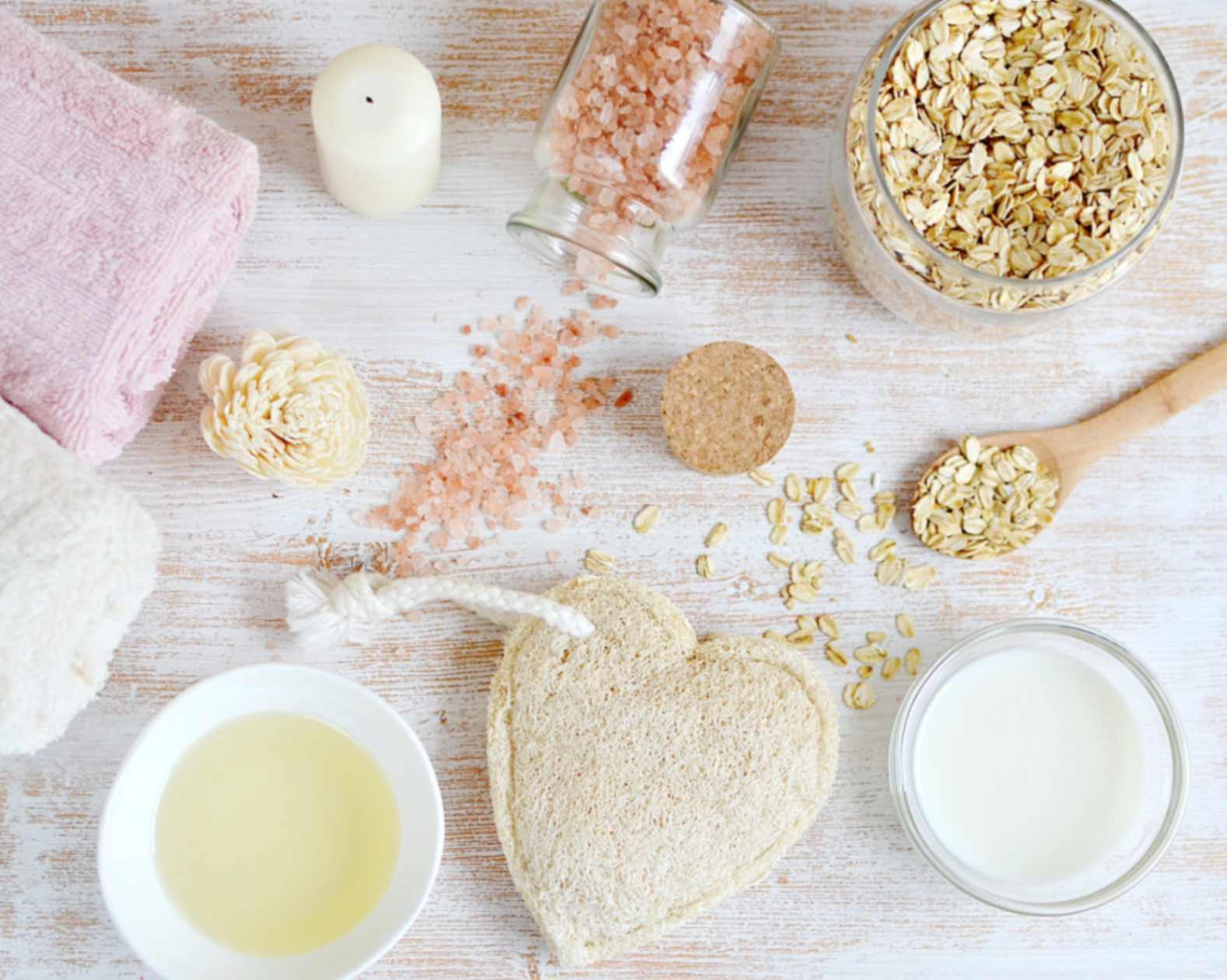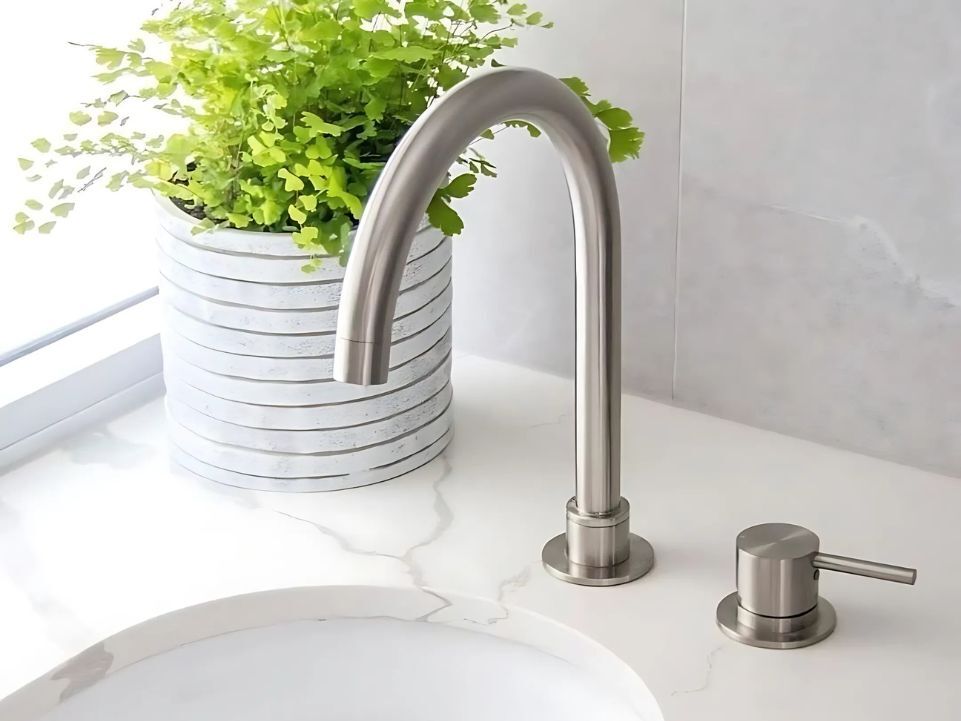
Oatmeal Bath Benefits Explained: Dermatologist Guide, DIY Recipes & Spa-Like Bathroom Ideas

Photo by Jelena Irikova
ALT Tag cover: Oatmeal Bath Guide: Benefits, DIY Recipes & Skin Relief Tips
ALT Tag main: Oatmeal Bath Benefits Explained: Dermatologist Guide, DIY Recipes & Spa-Like Bathroom Ideas
If you’ve ever dealt with itchy, inflamed skin, you’ll know how maddening it can feel — especially when creams don’t quite hit the mark. For many Australians, an oatmeal bath offers gentle, natural relief that’s been trusted for centuries. Dermatologists still recommend it today as a safe, low-risk first step before reaching for stronger treatments.
While it’s not a cure-all, an oatmeal bath may help soothe conditions like eczema, rashes, or sunburn — making it a simple but clinically backed remedy worth trying at home. In this guide, you’ll learn:
- The benefits of oatmeal soaks (and the science behind them)
- Step-by-step DIY oatmeal bath recipes
- Safety tips and dermatologist insights
- How to elevate your oatmeal bathroom into a spa-like retreat
Let’s dive in.
What Is an Oatmeal Bath?
An oatmeal bath uses colloidal oatmeal— not the quick oats you’d eat for breakfast. Colloidal oatmeal is finely ground whole oats, designed to disperse evenly in warm water rather than clumping at the bottom of the tub.
Unlike cereal oats, colloidal oatmeal contains starches, beta-glucans, and natural compounds that help skin hold onto moisture while calming irritation. When added to a bath, it creates a silky texture that coats and protects the skin barrier.
In other words, think of an oatmeal bath as skin food you can soak in — a natural cleanser, moisturiser, and itch-soother rolled into one.
Also Read: [Ultimate Guide] Outdoor Spa Ideas & Backyard Spa Designs (2025 Edition)
Why Skin Itches & Who Benefits from Oatmeal Baths

Photo by Irina Esau
Before we dive into the science, it helps to understand why skin becomes irritated in the first place. From eczema flare-ups to insect bites, many conditions can leave your skin itchy and inflamed. This section breaks down the most common triggers Australians face — and who’s most likely to benefit from an oatmeal bath.
Common Triggers for Itchy Skin
Australians deal with a mix of skin irritants — from long, dry summers to unexpected insect bites. Some common culprits that oatmeal baths may help ease include:
- Eczema and dermatitis
- Psoriasis
- Dry or sensitive skin
- Hives and rashes
- Insect bites and stings
- Sunburn (a classic Aussie problem)
- Chickenpox or shingles
- Nappy rash in babies
Who Should Try Oatmeal Baths
- Adults with chronic skin conditions like eczema flares.
- Children with sensitive skin — oatmeal baths are gentle and often easier than applying creams.
- Pregnant women — a safe, natural option when many medicated products aren’t recommended.
- Older adults — as skin thins and dries with age, oatmeal helps replenish natural hydration.
Who Should Avoid Oatmeal Baths
- Anyone with a known oat allergy (always patch test if unsure).
- People with open wounds or severe infections — speak to your GP before trying.
- Those with compromised skin barriers, where professional advice is essential.
Also Read:
How Oatmeal Helps the Skin (Science-Backed Benefits)

Photo by 5./15 WEST
You may have heard that oats are soothing, but what actually makes them work on your skin? The answer lies in their unique blend of natural compounds — from moisture-locking starches to anti-inflammatory antioxidants. Here’s how a simple oatmeal bath can support skin health on multiple levels.
1. Hydration & Moisture Retention
Colloidal oatmeal is rich in starches and beta-glucans, which act like natural sponges — drawing in water and locking it into your skin. This helps strengthen the skin barrier and reduce dryness.
Pro Tip: For the best results, gently pat dry after your bath and apply a fragrance-free moisturiser straight away to “seal” in hydration.
2. Anti-Inflammatory & Anti-Itch Effects
Oatmeal contains compounds called avenanthramides, along with vitamin E and ferulic acid. These naturally occurring antioxidants help reduce mild-to-moderate itch and irritation by calming inflammatory proteins in the skin.
Dermatologists often suggest oatmeal baths as an adjunct for eczema flare-ups because they soothe without the side effects of medicated creams.
3. Antioxidant Protection
Long days outdoors in the Australian sun can leave skin inflamed and tight. Oatmeal’s antioxidants assist in repairing damage from UV exposure and support skin barrier recovery, making it especially handy after mild sunburn.
4. Antifungal & Prebiotic Support
Early research suggests colloidal oatmeal may support a healthy skin microbiome. It appears to limit harmful fungi while encouraging protective bacteria — a balance that’s increasingly linked to long-term skin health.
5. Cleansing & pH Balancing
Oats contain natural saponins, which gently cleanse the skin without stripping it dry. They also act as buffering agents, restoring skin’s natural acidity — crucial for people dealing with eczema or dermatitis.
These benefits explain why so many turn to an oatmeal bath for eczema, oatmeal bath for itchy skin, and other everyday skin concerns.
6. Clinical Evidence: What the Research Says About Oatmeal Baths
It’s one thing to rely on tradition, but quite another to have science confirm what many already know — oatmeal can genuinely help soothe the skin. Here’s a quick look at the clinical backing behind the humble oatmeal bath:
- The U.S. FDA officially recognised colloidal oatmeal as a skin protectant in 2003.
- A 2012 clinical study found oatmeal baths reduced reliance on corticosteroids in children with atopic dermatitis.
- Many Australian dermatologists still recommend oatmeal baths as part of a holistic skin management routine.
Also Read:
Historical & Cultural Use of Oats for Skin

Photo by Jelena Irikova
The use of oats for soothing the skin is far from a modern wellness trend. Records from ancient Roman times describe oat baths being used to relieve irritation and dryness. Across Europe and Asia, oats were often ground and applied as poultices or mixed into baths as a natural skin soother.
By the mid-20th century, dermatology formalised this wisdom. In 1945, colloidal oatmeal (oats ground into a fine, water-soluble powder) became a recognised treatment for itchy, inflamed skin. By 2003, the FDA in the United States officially listed it as a safe and effective over-the-counter skin protectant.
Today, Australian dermatologists often recommend an oatmeal bath as a supportive treatment for mild-to-moderate cases of eczema, chickenpox, sunburn, and general itchiness. Clinical studies even suggest that regular use may reduce reliance on stronger medications like steroid creams. With a history stretching across centuries and cultures, oats have earned their place as one of the safest and most accessible remedies for skin comfort.
Also Read: 40+ Bathroom Lighting Ideas | Ultimate Guide to Beautiful & Functional Bathroom Lighting
How to Make Colloidal Oatmeal (DIY or Store-Bought)

Photo by mady70
Not all oats are created equal when it comes to skin care. To get the soothing effect, you’ll need colloidal oatmeal. The good news? You can make it at home with pantry staples, or pick up a trusted pre-made version at the chemist.
DIY Method
Making colloidal oatmeal at home is straightforward and affordable:
- Tools you’ll need: a high-powered blender, coffee grinder, or food processor.
- Ingredients: whole or rolled oats (avoid instant oats with additives).
- Grind oats until they form a fine powder. A quick test: sprinkle a spoonful in water — if the water turns milky white, it’s fine enough.
Pro tip: To save yourself a messy tub clean-up, tie the ground oats into a piece of cheesecloth, muslin, or even a clean pair of pantyhose, then let the water run through it as you fill the bath. You’ll still get the soothing effect without clogging the drain.
This simple DIY oatmeal bath recipe is perfect if you like a natural, low-cost option.
Store-Bought Options
If you’d rather skip the blending, there are plenty of dermatologist-trusted colloidal oatmeal products available at Australian chemists and supermarkets. Popular international brands include Aveeno and Eucerin, both recommended for their tested safety and reliability.
- Pros: Quick, convenient, finely milled for easy dissolving.
- Cons: More expensive than DIY and comes with packaging waste.
Either way, whether you make your own or buy pre-packaged, the skin-soothing results of a well-prepared oatmeal bath are the same.
Also Read: 25+ Ways to Save Water: Practical Tips for Your Kitchen, Bathroom, Laundry Room, and Garden!
How to Prepare & Take an Oatmeal Bath (Step-by-Step Guide)

Photo by AlinaYudina
Knowing how to set up your bath properly makes all the difference. It’s not just about tossing oats into water — small details, like water temperature and moisturising afterwards, can make your bath more effective and prevent irritation.
Here’s a foolproof routine:
Step-by-Step Instructions
This routine is backed by dermatology guidelines and expert sources.
Step 1. Use lukewarm water (not hot)
Hot water can strip the skin’s natural oils and worsen itching. Instead, fill the tub with lukewarm water (about 27–30°C / 80–86°F) — warm enough to be comfortable, but never hot.
Step 2. Add ½ to 1½ cups of colloidal oatmeal
Sprinkle in colloidal oatmeal (either store-bought or finely blended oats — see below). Use:
- ½ cup for smaller tubs or shallow baths
- Up to 1½ cups for full-size tubs
Note: Always use colloidal-grade oats — finely ground so they suspend in water. Regular oats can settle or clog drains.
Step 3. Stir to distribute evenly
Mix the oatmeal well with your hand or a bath wand to fully dissolve and prevent clumping. You should see a milky, silky texture in the water.
Step 4. Soak for 10–15 minutes
This duration allows for skin absorption of beneficial oat compounds like beta-glucans and avenanthramides, which help reduce inflammation and itching.
Note: Avoid staying longer, as prolonged soaking may over-dry the skin.
Step 5. Gently pat skin dry (don’t rub)
After exiting the bath, gently pat skin dry with a soft towel. Rubbing can irritate sensitive or broken skin.
6. Moisturise immediately
Within 3 minutes of drying, apply a fragrance-free, hypoallergenic moisturiser to lock in hydration and restore the skin barrier. This step is especially important for eczema-prone or dry skin.
Best to Pair With
- Fragrance-free moisturisers (e.g. CeraVe, QV, Epaderm, Aveeno Eczema Therapy)
- Soap-free cleansers (for cleansing after or between baths)
- Topical treatments (apply after bath if prescribed)
Expert Tips & Cautions:
- Avoid bath additives: Skip essential oils, bubble bath, bath bombs, or strong salts — they can irritate or trigger sensitive or inflamed skin.
- Supervise children carefully: The tub will be slippery from the colloidal oatmeal. Stay close to prevent falls or ingestion.
- Keep baths short & infrequent if needed: For some people (especially with eczema), daily oatmeal baths may be soothing; others may do better with 2–3 times a week. Follow your dermatologist's advice.
- Always patch test if it’s your first time: Although rare, oat allergies or sensitivity can cause irritation. Test a small amount of oatmeal paste or bathwater on a small area of skin (e.g. forearm) before full use.
- For best results: Use the bath as part of a broader skincare plan — alongside medical treatments like corticosteroids or antihistamines (when prescribed).
This ritual not only provides relief for irritated skin but also helps transform your everyday bathroom into a calming, spa-like sanctuary. An oatmeal bathroom routine can become part of your weekly wellness practice.
Also Read: Accessible Bathroom Design Guide: Safe, Stylish, and Smart Bathrooms for the Handicapped
Oatmeal Bath Safety, Risks, and When to See a Doctor

Photo by CalypsoArt
While an oatmeal bath is considered safe for most people, it’s still important to be aware of possible risks and know when professional care is needed. Think of it as a supportive home remedy, not a cure-all.keep in mind.
Possible Side Effects
Contact dermatitis is rare but can happen. Some people may experience mild reactions like redness, increased itching, or rash after soaking. This is usually linked to sensitivity rather than the oats themselves. If you notice these symptoms, discontinue use and monitor your skin.
When to Avoid an Oatmeal Bath
- If you have a known oat allergy
- If skin is cracked, infected, or weeping
- If treating a child under 6 months, consult a pediatrician first
An oatmeal bath is a supportive therapy, not a cure. For moderate to severe conditions (e.g. atopic dermatitis flares, psoriasis, or infected eczema), you’ll still need prescribed treatments.
When to Seek Medical Help
An oatmeal soak should bring relief — not discomfort.
- If your symptoms persist, worsen, or spread despite regular baths, it’s time to see your GP or dermatologist.
- You should also seek help if you notice signs of infection, such as swelling, pus, or fever.
Safety for Babies, Pregnancy & Elderly
- Babies: Safe when tested first with a patch on the skin. Avoid fragranced or added-ingredient products. For persistent nappy rash or widespread rashes, consult a paediatric dermatologist.
- Pregnancy: Colloidal oatmeal may help ease mild itching, but it’s not a substitute for medical care. If itching continues, check in with your doctor or midwife.
- Elderly: Oatmeal baths can be especially soothing for dry, fragile skin. Just be sure to avoid overly hot water to reduce the risk of burns, and consider adding non-slip mats to prevent falls.
Bottom line: An oatmeal bath can be a wonderfully gentle, skin-friendly ritual. But if irritation or rashes don’t settle, don’t push through — it’s always safer to get medical advice.
Important reminder: An oatmeal bath is supportive, not a cure. For serious or persistent skin conditions, professional medical advice is essential.
Oatmeal Skincare Products Beyond Baths

Photo by Davizro
Oatmeal baths get plenty of attention, but oats have made their way into skincare products well beyond the tub. If you’re not in the mood to run a bath or you simply want to extend the soothing benefits into your daily routine, there are plenty of options on the shelves here in Australia.
- Lotions & moisturisers – Perfect for locking in hydration after a shower. Many dermatologist-tested Australian brands use colloidal oatmeal to help strengthen the skin barrier.
- Cleansers, soaps & shampoos – Gentle alternatives for sensitive or itchy skin, especially during summer when sweat and sunscreen can irritate.
- Face masks & scrubs – Colloidal oatmeal works as a mild exfoliant while calming redness.
- Shaving gels – A great choice for those with razor burn or dry skin concerns.
How they differ from a soak:
- Oatmeal baths deliver head-to-toe relief and hydration in one sitting.
- Lotions & creams offer longer-lasting barrier support, locking in moisture through the day.
Pro tip: If you’re shopping, look for “colloidal oatmeal” on the label, and choose products with dermatologist testing for peace of mind. Brands like Aveeno and Dermaveen are widely available in Australian pharmacies.
Also Read: Nero Tapware’s Mecca Care Line: Australia’s AS1428.1 Compliant Tapware for Accessible Bathrooms
Additional Benefits Beyond Skin Soothing
While the skin benefits are often the headline, oatmeal baths come with a few unexpected extras:
- Relaxation & stress relief – A warm soak creates a spa-like pause in your day, particularly when paired with soft lighting and uncluttered bathroom styling.
- Sleep support – Taking a soak before bed may help calm the nervous system and set up a restful night.
- Budget-friendly wellness – Compared with pharmaceutical options, an oatmeal bath is affordable, accessible, and something you can prepare with pantry basics.
- Medication minimisation – In mild-to-moderate cases, oatmeal baths may help reduce reliance on stronger solutions like corticosteroids or antihistamines (always under doctor guidance).
Bonus: Oatmeal Baths for Pets

Photo by O_Lypa
It’s not just humans who benefit from an oatmeal bath. Dogs often suffer from itchy skin, flea allergies, or hot spots, and a soak can provide gentle relief.
- DIY option: Finely ground oats in lukewarm water.
- Pet-safe shampoos: Available at pet stores across Australia, designed specifically for canine pH balance.
Important: Always check with your vet before trying an oatmeal soak if your pet has open wounds, ongoing infections, or severe allergies.
Myths vs Facts
- Myth: Any oatmeal will work.
Fact: Only colloidal oatmeal (finely ground) disperses properly in water. Regular rolled oats won’t. - Myth: The longer you soak, the better.
Fact: Soaks longer than 15 minutes can actually dry your skin. - Myth: Adding essential oils like lavender makes it more effective.
Fact: Oils may cause irritation, especially for children and sensitive skin. - Myth: Oatmeal baths cure eczema.
Fact: They ease symptoms like itchiness and redness, but they are not a cure.
Also Read: Eco-Friendly Bathroom Upgrade: 29 Ideas for Sustainable Design & Renovation
FAQs
Can oatmeal baths help with acne?
They may reduce redness and calm inflammation, but they’re not a replacement for acne-specific treatments.
How often can I take an oatmeal bath?
2–3 times a week is usually plenty, but daily soaks are fine for short periods if skin is very dry or itchy.
Is it safe for babies and toddlers?
Yes, when done properly with plain colloidal oats. Always supervise and keep soak time short.
Will oatmeal baths clog drains?
If oats aren’t ground finely, they can. Strain the water or use a muslin bag to avoid plumbing issues.
Do they lighten or change skin tone?
No, they simply soothe and hydrate.
Can I add essential oils?
Not recommended. Many oils can sting or worsen irritation, particularly in young or sensitive skin.
Conclusion
The oatmeal bath is a centuries-old remedy that still holds its place in modern Australian bathrooms. It may help with itchy, dry, or irritated skin, while also providing relaxation and an easy at-home spa moment. Safe for children, adults, and even pets, it’s a practical, affordable, and accessible option.
That said, if your symptoms are severe, persistent, or worsening, always speak with your GP or dermatologist for tailored advice.
Create a Zen Oatmeal Bathroom Experience with Nero Tapware

If you’re looking to elevate the humble oatmeal bath into a true spa ritual, your bathroom design matters just as much as the soak itself. With Nero Tapware’s sleek mixers, rainfall showers, and brushed nickel finishes, you can transform your bathroom into a calming, retreat-like space, especially with our Zen collection.
Think: soft lighting, a freestanding tub, warm towels, and your soothing oatmeal soak—pure relaxation. Investing in premium tapware doesn’t just improve aesthetics, it enhances the entire experience, making your oatmeal bathroom both functional and beautiful.
Tailored Tapware for Every Design Style
Looking for something beyond the Zen collection? Nero Tapware’s versatile collections—Mecca, Serenity, Bianca, Opal, Kara, York, and many more—are designed to suit every bathroom and kitchen aesthetic. Explore the range and bring your vision to life.
Explore Nero Tapware’s luxurious collection today and start creating your spa-inspired bathroom oasis.
Also Read:











